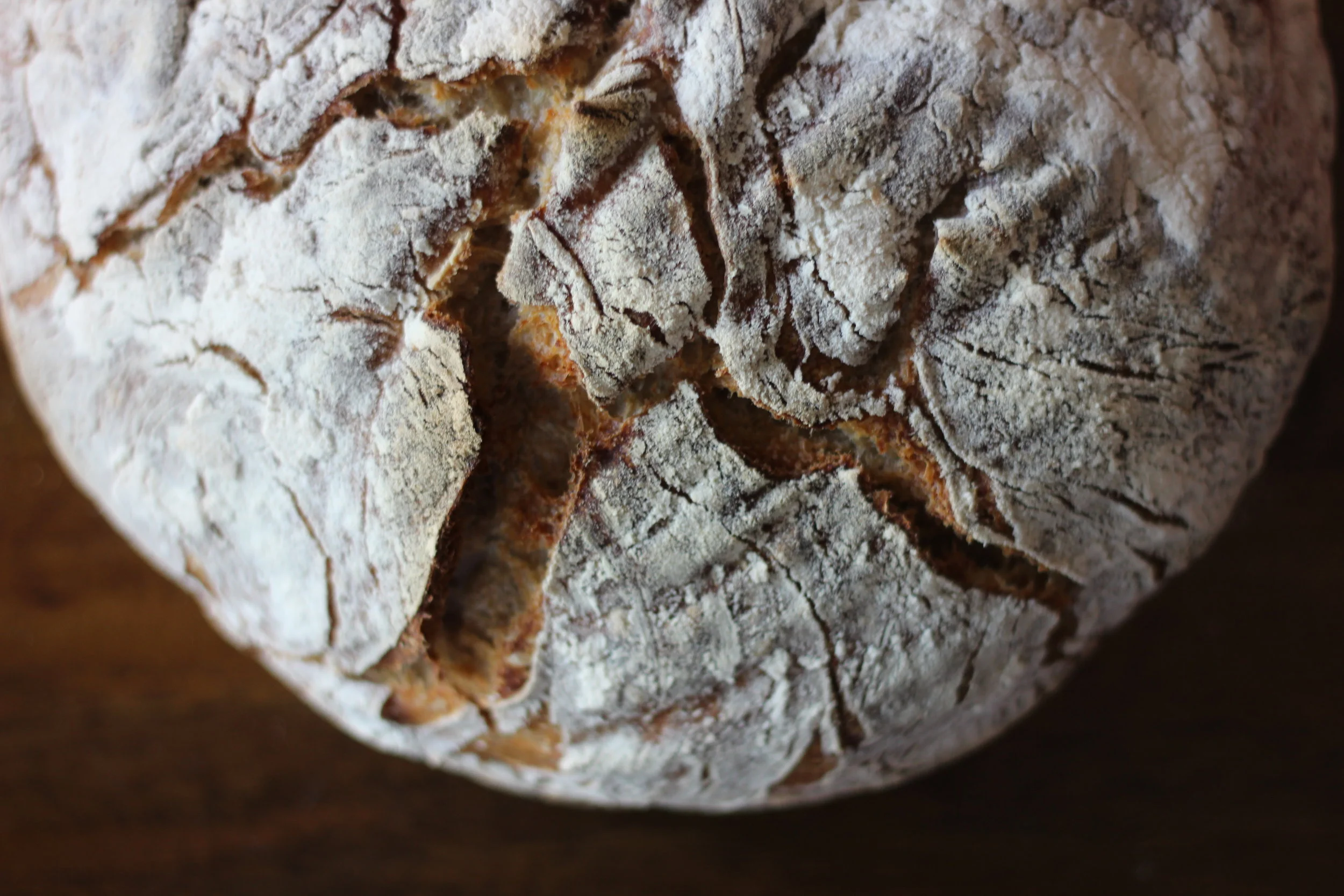Nowadays, breads are very different from what they used to be. Sourdough bread is very beneficial for us and easy to digest. A good bread is deeply rooted in many cultures. It is like art, you give your time, your heart, to it and then in return you will be given something beautiful and extraordinary.
This recipe is easy to follow, perfect for people who start their journey with sourdough. There is not as much work as you think there would be, it takes only around 15 minutes spread over 24 hours but definitely worth to try. I'm always proud of my beautiful loafs! And I hope you will be too of yours!
Makes 1 big loaf
use 23cm diameter (inside) proving basket
.
Method
The night before you plan to make the dough you should make the leaven.
In a big bowl mix together 3 tablespoons of active sourdough starter with 75 grams water and 75 grams water. Cover with plastic wrap and let it rest for over night, at least 12h at room temperature.
In the morning, you should see bubbles appear of the surface of the leaven.
In a small bowl mix 50 grams of water with 1 tablespoon of salt. Keep stirring till salt dissolves. Set a side.
Add the rest of the water (475g) to the leaven and stir it with a wooden spoon until well mixed. Add both flours and stir it until the (dry) flour won't be visible any more. You can use a standing mixer if you like, I find it very helpful. Attach a dough hook and mix it on low speed for 3 minutes. Cover with plastic wrap and let it rest for 4 hours or until double the size.
After this time, mix in the salt and water mixture. Work the dough by pinching and squeezing it. If you use a mixer add the remaining water, mix it for 5 minutes. Cover the dough with plastic wrap and let it rest for 40 minutes.
Now you will start folding the dough by grabbing the dough on one side, lifting up and folding it over on top of itself. Fold the dough 8 times, turning the bowl clockwise each time. Cover and let it rest for another 40 minutes. Repeat folding 3 times.
Once you have finished the folding let the dough rest for one hour.
Rub the inside of the proving basket with flour to help prevent the dough from sticking. If you don't have any you can use a regular bowl as well.
If you use a regular bowl: line the bowl with a clean kitchen towel, dust it well with flour and rub it in. This way you will avoid the dough sticking to the kitchen towel.
Sprinkle some flour on the working surface, tip the dough on top of it. Using a pastry scraper gently shape it in to loose rounds by lifting your dough and scraping them around and turning over the dough. Move the dough to the basket or bowl, sprinkle some flour on top, cover it with a kitchen towel and put inside a plastic bag. Let it rise for 4 hours or till double the size.
Place a 'Dutch oven' or cast iron pot with a lid in the oven. Preheat the oven to 260°C (500°F).
Carefully remove the Dutch oven form the oven (HOT) and gently tip the dough in to it. Using a raiser blade or sharp knife score the surface of the loaf at a slight angle. Cover with a lid and bake it for 10 minutes. Reduce the temperature to 230°C (450°F) and bake for another 20 min. After this time take out the 'Dutch oven' and remove the lid. Place the pot back in the oven, continue baking for further 20 minutes, until the crust is golden.
Remove the pot from the oven, using spatula lift the bread and transfer to the cooling rack, let it cool completely before serving.
Ingredients
for the leaven:
- 3 tablespoons active sourdough starter
- 75 grams white bread flour
- 75 grams water
for the dough:
- 1 tablespoon himalaya pink salt
- 525 grams water
- 675 grams white bread flour
- 125 grams rye flour

